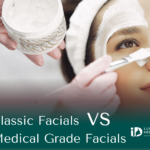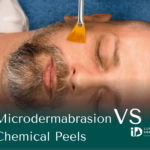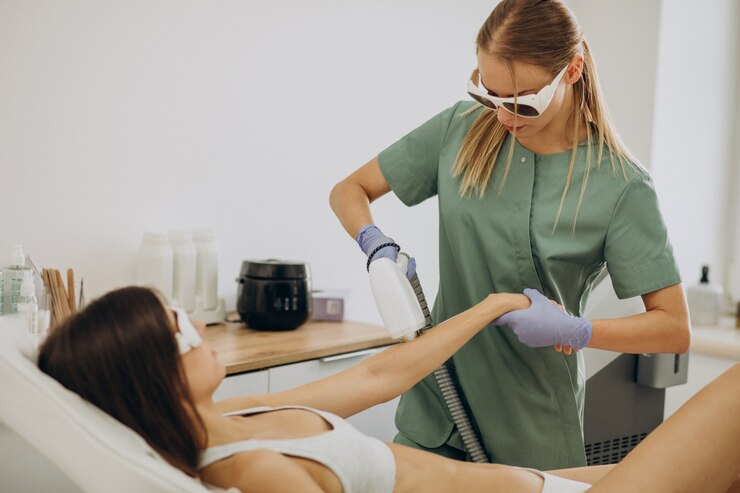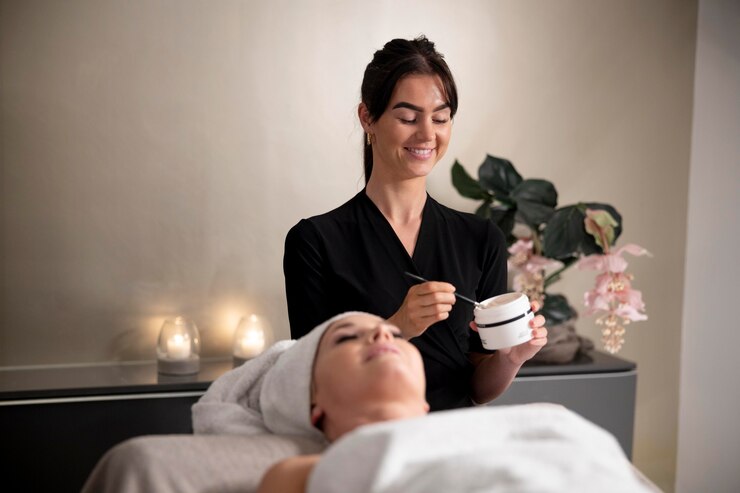Rosacea is a skin condition that affecting millions of people worldwide characterized by redness, visible blood vessels, and acne-like breakouts, rosacea can take a significant toll on an individual's self-esteem and quality of life. Fortunately, with proper treatment and care, the symptoms of rosacea can be effectively managed, allowing individuals to regain their confidence and …
Rosacea is a skin condition that affecting millions of people worldwide characterized by redness, visible blood vessels, and acne-like breakouts, rosacea can take a significant toll on an individual’s self-esteem and quality of life. Fortunately, with proper treatment and care, the symptoms of rosacea can be effectively managed, allowing individuals to regain their confidence and achieve healthier skin defeating rosacea skin condition.
We will explore what rosacea is, how to identify it, the most effective rosacea treatment options available, and ways to maintain long-term skin health for those affected by the condition.
What Is Rosacea?
Rosacea is a chronic, inflammatory skin condition that primarily affects the face which can be defeated by Facial treatments though it can occasionally appear on other areas of the body. It is characterized by persistent redness, often in the form of a “blushing” or “sunburned” appearance, as well as visible blood vessels, small bumps, and pimples that can resemble acne. In some cases, rosacea can also affect the eyes, causing irritation, dryness, and redness known as ocular rosacea.
While rosacea is most commonly seen in fair-skinned individuals between the ages of 30 and 50, it can occur in people of all skin types and ages. Women are more likely to develop rosacea, though men often experience more severe forms of the condition. While the exact cause of rosacea remains unclear, it is believed to be linked to a combination of genetic and environmental factors, as well as an overactive immune response.
The four primary subtypes of rosacea are:
- Erythematotelangiectatic Rosacea: Characterized by persistent/repeated redness and visible blood vessels.
- Papulopustular Rosacea: Marked by pimples and pustules, resembling acne.
- Phymatous Rosacea: Involves thickening of the skin, particularly on the nose (rhinophyma).
- Ocular Rosacea: Affects the eyes causing dryness, irritation, and redness.
Common Symptoms of Rosacea
The symptoms of rosacea can vary greatly from person to person. Some may experience mild redness, while others may develop severe flare-ups. Common symptoms include:
- Facial redness: This is the hallmark symptom of rosacea and is often most pronounced on the nose, cheeks, and forehead.
- Visible blood vessels: Small, dilated blood vessels, known as telangiectasia, can become visible on the skin.
- Acne-like bumps: These bumps may resemble acne and can be filled with pus. They typically do not result in scarring, unlike traditional acne.
- Swelling: The skin may become swollen or puffy, especially around the eyes.
- Eye irritation: Those with ocular rosacea may experience dryness, redness, burning, or a gritty sensation in the eyes.
- Thickened skin: In severe cases, the skin can thicken, particularly around the nose, leading to a condition called rhinophyma.
What Causes Rosacea?
Although the exact cause of rosacea is unknown, several factors are traced that believed to contribute to its development:
- Genetics: A family history of rosacea skin condition increases the likelihood of developing the condition. Certain genetic factors may predispose individuals to rosacea.
- Environmental Triggers: Many individuals with rosacea find that their symptoms flare up in response to specific triggers, such as:
- Hot or cold weather
- Spicy foods
- Alcohol
- Sun exposure
- Stress
- Hot beverages
- Certain skincare products
- Immune System Dysfunction: It is believed that an overactive immune system may play a role in rosacea by triggering inflammation in the skin.
- Demodex Mites: Some studies suggest that the presence of Demodex mites, which naturally inhabit human skin, may contribute to rosacea by exacerbating inflammation.
How to Diagnose Rosacea
Rosacea is typically diagnosed by a dermatologist, who will assess the patient’s symptoms, medical history, and physical appearance of the skin. In most cases, a physical examination is enough for a diagnosis. However, in some instances, additional tests may be needed to rule out other skin conditions, such as acne or eczema.
Treatment Options for Rosacea
While there is no permanent cure for rosacea, there are many treatments available that can help control symptoms and improve the appearance of the skin. Treatment methods vary based on the severity and type of rosacea. Below, we’ll explore the most effective treatments that work wonders in managing rosacea:
Topical Medications
Topical treatments are often the first treatment or medication for managing rosacea. These medications are applied directly to the affected skin areas and can help defeating rosacea inflammation, redness, and breakouts.
- Metronidazole: This is one of the most commonly prescribed topical treatments for rosacea. Metronidazole is an antibiotic that is generally prescribed as it helps reduce inflammation and redness. It is available in both gel and cream forms and is applied once or twice daily to the affected areas.
- Azelaic Acid: Azelaic acid has both anti-inflammatory and antibacterial properties, making it effective in treating the bumps and pimples associated with rosacea. The medicine is also helpful for unclogging pores and reduce redness.
- Ivermectin: Ivermectin is a topical medication that targets the Demodex mites, which are believed to contribute to rosacea. By reducing the number of these mites, ivermectin helps alleviate inflammation and redness.
Oral Medications
For more severe cases of rosacea skin condition, oral medications may be necessary. These medications are typically used when topical treatments are ineffective or when rosacea symptoms are particularly intense.
- Antibiotics: Oral antibiotics, such as doxycycline and tetracycline, are commonly prescribed to reduce inflammation and control the acne-like breakouts associated with rosacea. These antibiotics are often used for moderate to severe rosacea.
- Isotretinoin: In rare cases of severe rosacea that do not respond to other treatments, oral isotretinoin (commonly known as Accutane) may be prescribed. Isotretinoin is a powerful medication that reduces the size of sebaceous glands and helps prevent the formation of acne-like bumps.
Laser and Light Therapies
Laser and light therapies are highly effective in treating the redness and visible blood vessels associated with rosacea. These procedures are usually performed in a dermatologist’s office or medical spa setting.
- Intense Pulsed Light (IPL): IPL uses broad-spectrum light to target the blood vessels beneath the skin, effectively reducing redness and visible capillaries. It is a non-invasive rosacea skin condition treatment that requires multiple sessions for optimal results.
- Pulsed-Dye Laser (PDL): PDL is another type of laser treatment that targets blood vessels and reduces redness. It is particularly effective for individuals with erythematotelangiectatic rosacea (persistent redness and visible blood vessels).
Lifestyle Modifications and Home Care
While medical treatments are essential for managing rosacea, lifestyle modifications and home care are equally important in maintaining long-term skin health.
- Sun Protection: Sun exposure is one of the most common triggers for rosacea flare-ups. It is mandatory or mostly effective to use a broad-spectrum sunscreen with SPF 30 or higher every day, even on cloudy days.
- Avoiding Triggers: Many individuals with rosacea have specific triggers that worsen their symptoms. Common triggers include spicy foods, alcohol, hot beverages, and stress. Keeping a diary of food, activities, and stress levels can help identify and avoid these triggers.
- Gentle Skincare: Using gentle, non-irritating skincare products is essential for those with rosacea. Avoid harsh exfoliants, fragrances, and alcohol-based products, which can further irritate the skin. Opt for soothing, hydrating products that promote skin health without causing flare-ups.
Dietary Modifications
Although more research is needed, some studies suggest that certain dietary changes may help alleviate rosacea symptoms. A diet rich in antioxidants, vitamins, and minerals can help support skin health. Additionally, avoiding known food triggers (such as spicy foods, hot drinks, and alcohol) may help reduce the frequency and severity of rosacea flare-ups.
Psychological Support
Living with rosacea can be emotionally challenging, as it often affects an individual’s self-esteem and confidence. Seeking psychological support, whether through therapy, support groups, or stress management techniques, can help individuals cope with the emotional impact of rosacea. Managing stress is crucial, as it is one of the common triggers of flare-ups.
Conclusion
Rosacea is a chronic condition that can be managed effectively with the right combination of treatments and lifestyle changes. While there is no cure, many individuals with rosacea find relief through a tailored treatment plan that includes topical medications, oral medications, laser therapies, and lifestyle modifications. The facials after the treatment like classic facials, medical grade facials etc. are useful for cooling the irritation effectively as the rosacea is chronic skin condition.
If you suspect you have rosacea or are struggling to manage your symptoms, it’s important to consult with a dermatologist. Early diagnosis and treatment can significantly improve the outcome, helping you maintain healthy, clear skin and regain your confidence. By understanding your triggers, following a consistent skincare routine, and utilizing effective treatments, you can effectively manage rosacea and reduce its impact on your daily life. With the right approach, you can not only able for defeating rosacea skin condition but also achieve glowing, healthy skin.







